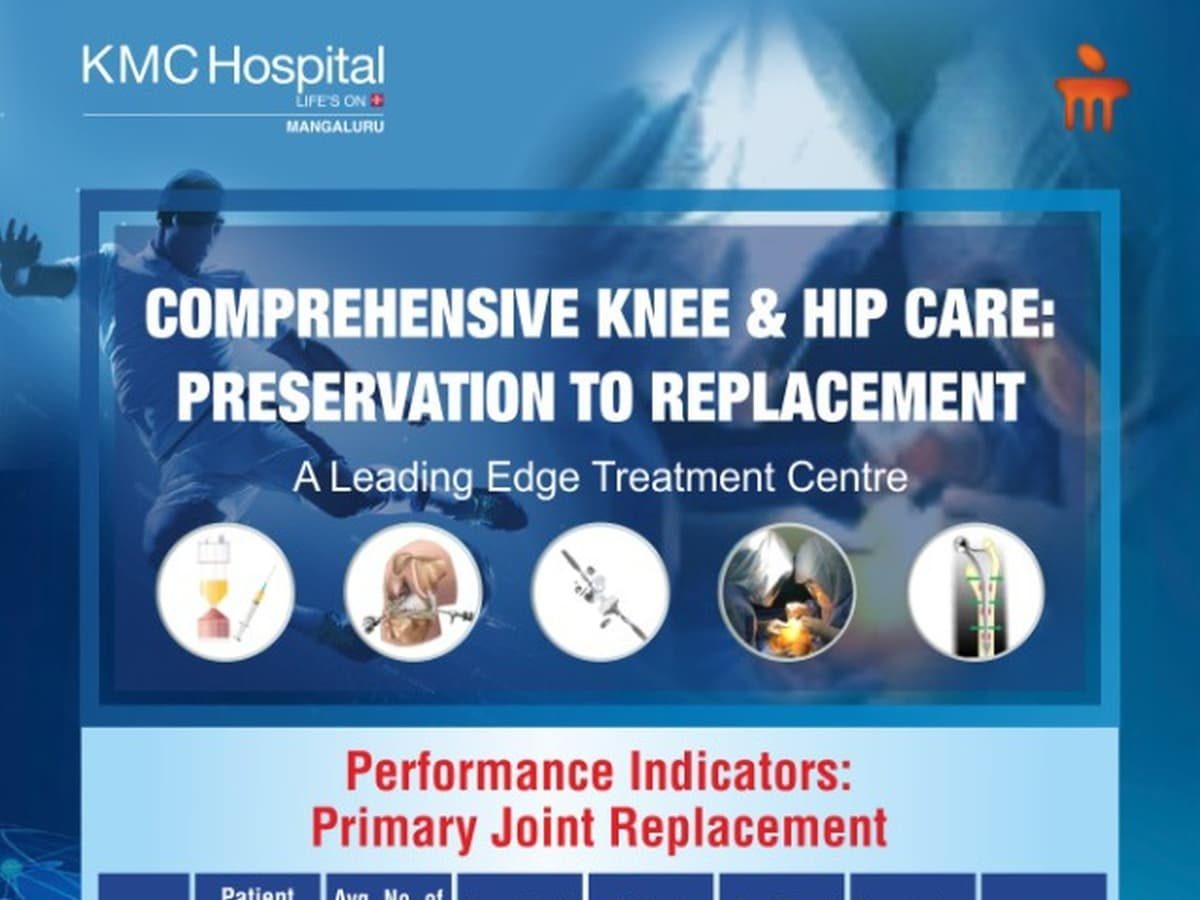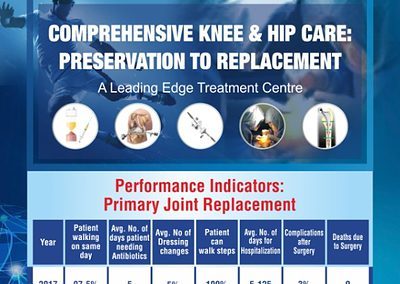Joint Replacement surgery is now a well- accepted surgical treatment that restores quality of life to people riddled with arthritis. When one desires this for oneself or for a family member, there is ample time to think about where to undergo the procedure and plan for the expenses involved. Irrespective of spending capacity, everyone would like to have the best possible quality of treatment within their means. There are choices within the surgery and most people rely on hearsay from others who have had treatment. However, feedback that a patient might provide about a particular treatment facility is very likely to be subjective and depends on many factors including their before- hand expectations and the interaction they have had with the staff at the hospital rather than objective measures related to how the medical facilities were. The media and internet are also full of marketing based information thereby making it difficult to differentiate which of the advertised equipment and facilities are scientifically proved to be vital in making the treatment successful. This article is intended to throw light on expected outcomes of joint replacement and will also hopefully help allay patients’ anxieties about operation.
Joint Replacement services are available across most major cities of India. Many people however flock to the bigger cities to have their operation by famous surgeons. Established specialist centres that undertake high volume of joint replacement should undoubtedly do well. However one must take into account two important issues of travelling far for having a Hip or Knee Replacement operation:
- The place one is travelling to must be chosen such that it is easy for the patient to make follow- up visits to the same surgeon who performs the operation. Joint Replacement operations are marketed by the health industry as ‘quick heal and return’. However, when a patient’s life is severely affected with arthritis, it takes a few months of adjusting to the new joint and correct their faulty walking style. It is much better if the same surgical team can assess and address issues at the stages of recovery. Travel to the center should be within reasonable comfort such that it can be made about 3- 4 times in the year following the operation. Some specialist centres have outreach clinics where the patient can avail the facility of meeting with their surgeon or a member of the same team at scheduled intervals.
- Following a joint replacement, it is better to restrict long travel for two weeks and long haul flights for a longer period. Complications like vein thrombosis are much commoner and can have serious consequences. Patients are often not educated about these in centres where ‘Health Tourism’ is advertised.
It follows therefore, that patients and their close family should be well educated about what they might endure and also regarding complications that can occur when they are at the planning stage of joint replacement surgery. This allows families to plan logistics accordingly. It’s common that children and close family make it a point to be around at the time of the operation. In the case of joint replacement surgery however, the course of the patient in hospital should be very predictable. They require help from family members to rehabilitate them back to normal life after discharge from hospital. It is better for the treating doctor and the comprehensive team to prepare the patient well for every stage of recovery right in the beginning.
Established centres of excellence for joint replacement across the world have very transparent displays of the above patient information and of their own performance with respect to patient outcomes and complications. It is an established guideline that such leading edge centres must continuously monitor every aspect of their services. Information must be available for anyone to view as well. If the hospital has got it published, any responsible member of their team there should be able to supply detailed data. It is not scientific enough to have a few patient testimonials like they do with miracle treatments advertised on television and the media. Patients have a right to ask their hospital about the average outcomes of the operation in that particular facility. It is easy for a discerning person to differentiate between true information and superfluous marketing strategies.
Every hospital is required by law to record data on various aspects electronically as well as on patient notes. An independent person should be employed to derive data from the hospital records such that there is no bias from the treating doctors. The specialist Hip & Knee unit has been set up at KMC Hospital, Ambedkar Circle, Mangalore for 5 years. It has been working on set best practice guidelines. Recently recognition of the services was provided by prominent international faculty when it was designated as the ‘Comprehensive Knee & Hip Care – a leading edge centre’. We already have data monitoring of our services and hence our own patient outcomes to display. We have called these our ‘Performance Indicators’ and they show results at par with the best centres of excellence in the world for Knee and Hip. This makes us the first and only such facility in India to produce such data. As we lead the way in excellent results, it is equally important to maintain the results over time and even keep getting better. The attached table shows the patient outcomes of primary Hip & Knee replacement surgeries from our centre over three years. While it’s evident that all our patients (ages 57 to 84 years at surgery) have been able to stand up the same day as their surgery, we have also had no major complications over the last three years. We can also see that we have moved to giving patients less antibiotics: a significant improvement as there are less related side effects in the elderly people who undergo joint replacement surgeries. The last year actually registered a slight drop in the number of our patients being able to do stair climbing before going home. However, we saw on further analyzing that we undertook a lot more complex surgeries in the last year, wherein a few patients had been rendered totally incapable of standing or walking before their operation. Complex and re- do surgeries obviously do not follow the routine norms and take longer to recover depending on the individual case. We have progressively been referred cases with severe complexities by other surgeons, as only an exclusive specialist centre like ours is equipped to do so.
The above performance indicators are most useful to patients who seek to undergo operations and are understandably worried. Some people have been informed about bad complications that have been sustained in relation to operations like inability to walk following surgery. In addition there is a lot of negativity with regard to operative treatment in Indian culture, where people resort to a number of advertised alternative treatments. While the good results at our centre can help give patients confidence, they can also help us educate them regarding their average probability on various parameters of activity. It is well known that following knee and hip replacement surgery, it takes a few months for patients to get adjusted to the new joint. The initial sensitivity period can last a few months and many tend to be disgruntled. Similar parameters as above help set benchmarks for patients during this time. We also arrange group sessions for patients at similar stages, which helps patients give confidence to each other too.
Finally, quality control doesn’t come at an additional cost to the patient. It is a part of organizational standard to deliver the best care and the onus for that is on the hospital itself. It is possible that a large setup would come at a higher cost as compared to a smaller hospital. From the patients’ aspect however, cost saving has to be looked at in terms of avoiding complications during operation. If untoward events occur during surgery, costs incurred by the patients could be sky- rocketing high. Hence high standard care need not be expensive but rather ‘cost- effective’.


